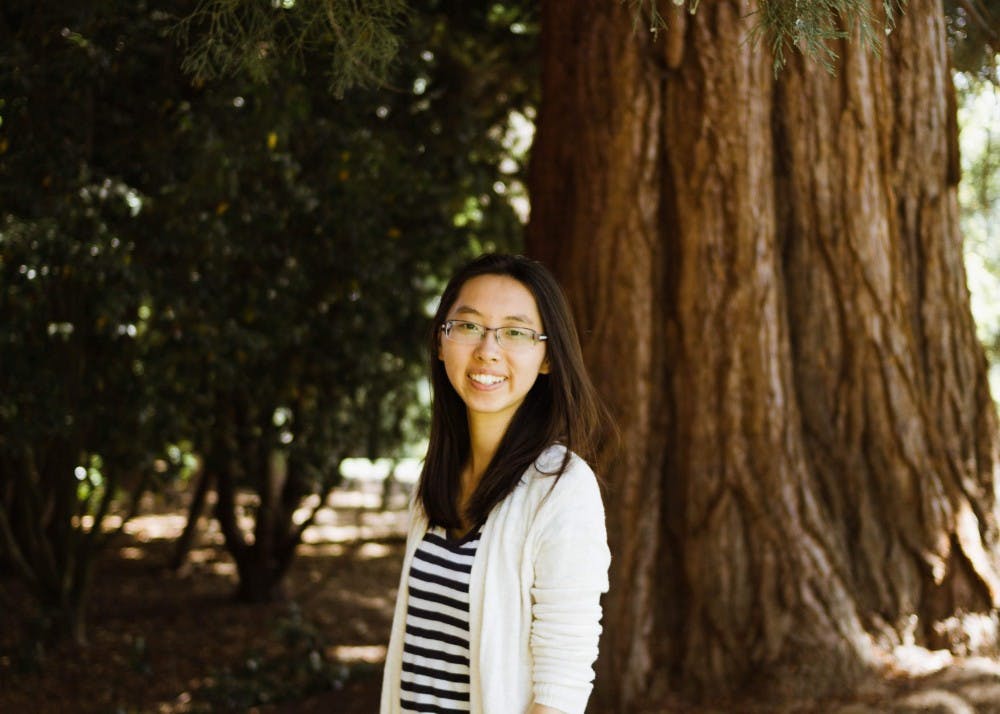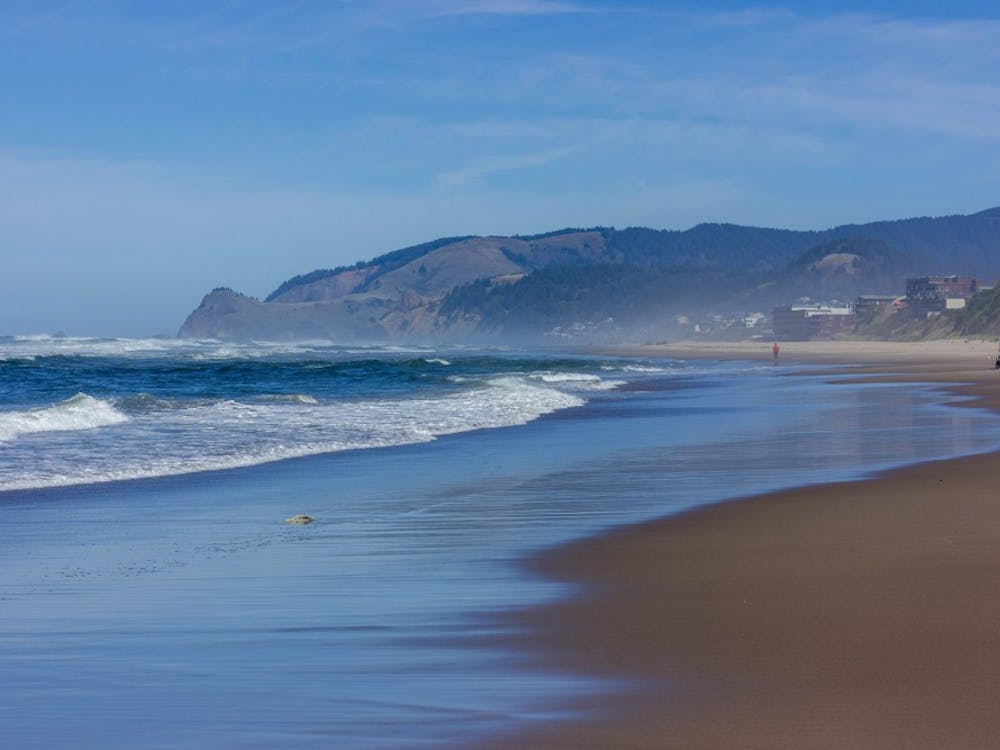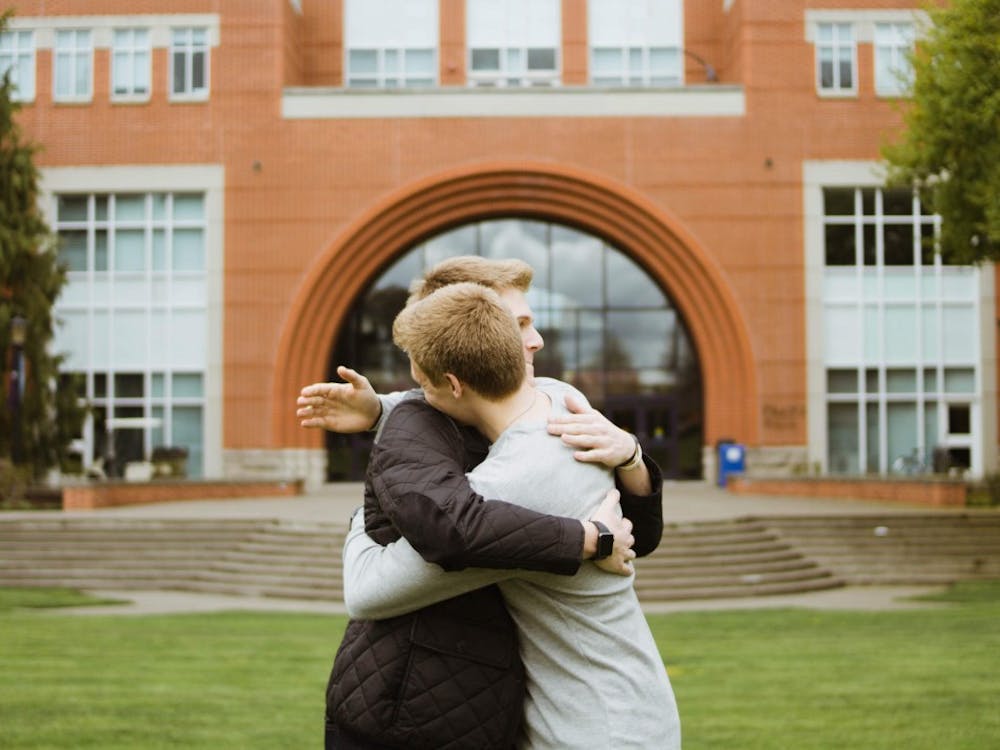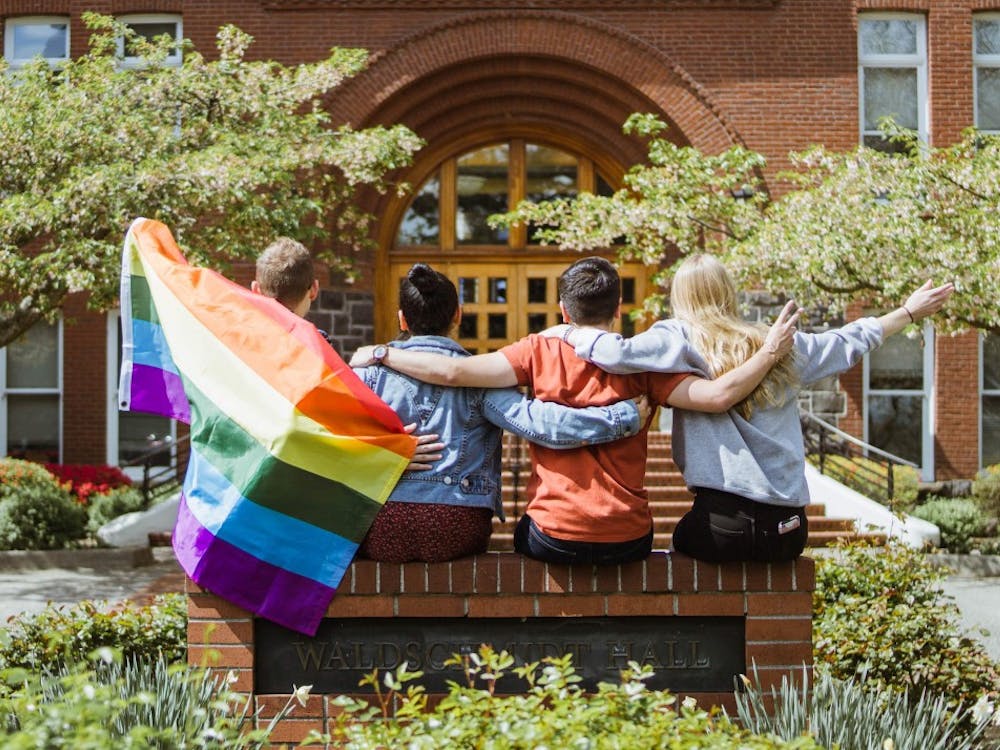On a foggy Saturday morning, I kneel next to a planter box that at first glance could contain anything. But a small sign hidden beneath the generic green leaves reveals that these are potato plants. My task is to work on digging up the potatoes that have been growing since spring. Pushing the vegetation aside, I bury my hands in the dirt, feeling around for oblong shapes. Potatoes begin to emerge like dirt-encrusted gems — pale yellow and of various sizes. Three, then five, soon a dozen potatoes are piled into a large bowl. And that is just from one plant from one planter in the garden.
Meanwhile, other volunteers bustle around, gathering lettuce and chard, bundling herbs, and picking pears and blush peas to fill out a donation box for a local shelter. While I work, I get to listen in on classes about composting, beekeeping and how to set up an edible garden. Over the next few weeks, I learn about amending plant beds, the benefits of spreading mulch and the importance of native plants.
All of this was part of my summer internship at a community learning garden in San Francisco called Garden for the Environment. My experience at GFE was amazing and helped me gain a better understanding of what is possible to accomplish in and through a garden. In general, community gardens are often managed by a nonprofit organization to turn unused land into spaces for productive plant life. Whether they offer classes or are simply places to rent out plots of land, community gardens are incredible resources that not enough people realize are available to them.
They are centers for education. Some gardens, like GFE, will offer classes so you can learn about garden basics, from growing plants to composting systems to water conservation. But even if your local community garden doesn’t offer classes taught by an instructor, simply walking around can be a learning experience. Take a look at the beds and find out what’s growing, because if someone else is cultivating it, that means you can, too.
Don’t limit yourself to edible plants either — look at the native plants and shrubs, as well. Native plants are great additions to any garden as they have many benefits — they’re already adapted to live in the area, so they’re low-maintenance, they support native wildlife populations and are generally beautiful plants.
Gardens are an opportunity for socialization. Especially if you find a garden where you can volunteer and work in groups, you are bound to meet new people. Over the summer, I got to meet native San Franciscans as well as people from around the world, all interested in plants and spending more time outdoors. I met other students who are passionate about the environment and plan on pursuing environment-related careers, and I also learned from people who have been gardening and teaching about nature for years. A garden will bring all kinds of people together — don’t be afraid to strike up a conversation!
Gardens can be places for healing. A lot of research shows that gardening has mental health benefits. If you’re feeling burnt out from school or work, a garden is a great place to take a walk, to sit and listen to music, or to distract you from your to-do list. Being out in the sun, getting fresh air and exercise, and being surrounded by plants are great ways to reduce anxiety and stress. Having a safe space to take care of other living things and connect yourself back to the world around you in a gentle way will do wonders for your mentality.
Finally, community gardens are spaces to create a positive impact on a larger societal scale. They are especially important to residents that don’t have easy and reliable access to fresh produce from a big retailer or farm. Community gardens demonstrate that local food production is possible. When partnered with schools or instructional programs, they allow people of all ages to learn about nutrition and the food they consume, addressing health issues around food.
In the wake of the Global Climate Strike, I also want to touch on the beneficial environmental impact of community gardens. One benefit of cultivating plants, whether ornamental or edible, is that carbon dioxide is removed from the air. But community gardens address the issue of food miles — that food has to travel thousands of miles to get from where it’s grown to our tables. Community gardens contribute to the local food movement — growing food locally cuts down on carbon emissions not just from transportation, but also the processing and packaging that goes into getting our food from point A to point B. Altogether, lowering emissions while ensuring what you put in your body is healthy and safe sounds like a win for everybody.
If I’ve sparked any interest, look no further than here on The Bluff! UP’s Student Led Unity Garden (SLUG) is located at the far end of campus past Tyson and Haggerty Halls but is well worth the quick walk. The club that runs the garden meets on Sundays to do work like weeding and other maintenance tasks, and they are always looking for more friendly faces and helping hands. If you live in the greater Portland area, check out The Community Gardens program and The Learning Gardens.
Whether you’re here in Portland on a study break or back in your hometown for something new to try over a vacation, I highly encourage you to go out and visit a community garden in your neighborhood. You don't need a background in gardening or even a green thumb to visit a community garden. It doesn’t matter what your motivation for visiting is. Community gardens are a public resource available to be used by all.
Jennifer Ng is a photographer for The Beacon. She can be reached at ng21@up.edu.








